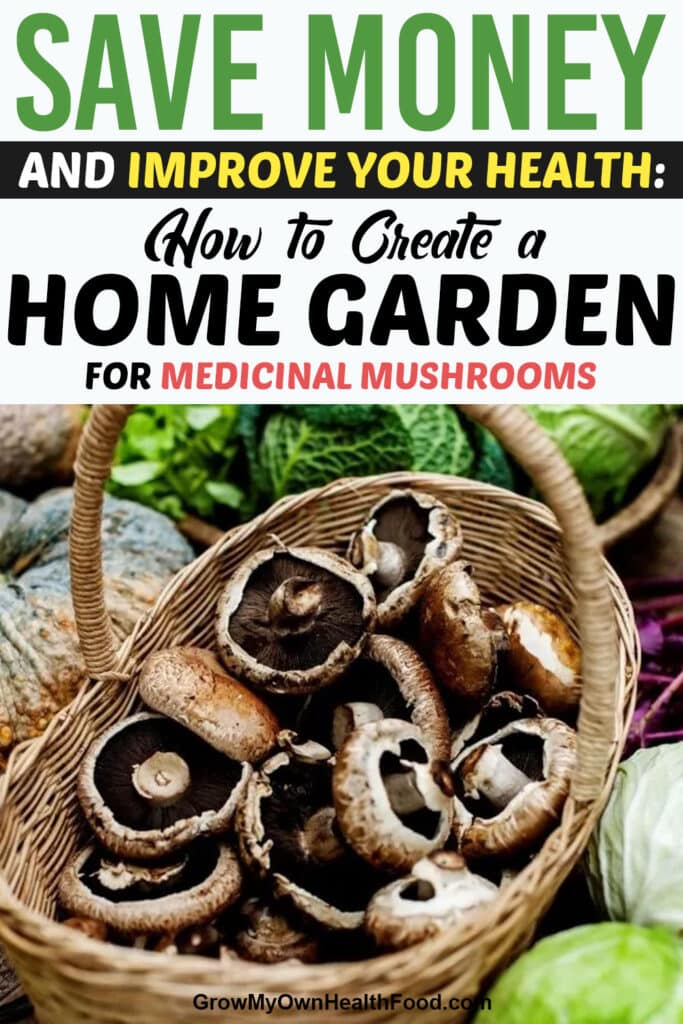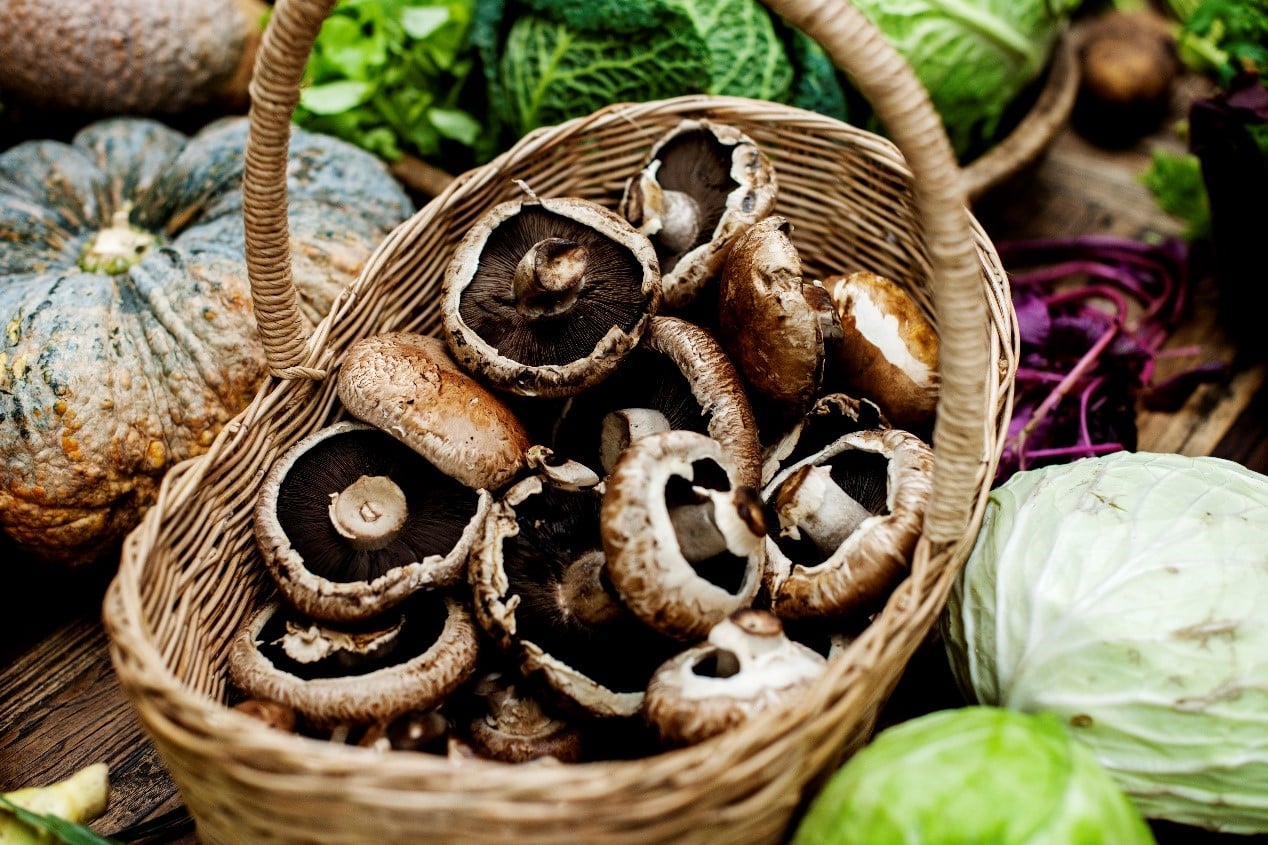Mushrooms have several medicinal properties. They can regulate blood sugar, detoxify, and even improve immunity against some cancers. And that’s only the beginning for the benefits of medicinal mushrooms.
If you want more mushrooms in your life, the best way is to grow them yourself. Then you don’t have to worry about organic markets and organic grocery stores. You don’t have to worry about spending a ridiculous amount of money.
It’s hard to know where to begin. Everything you need to know to get started growing mushrooms in a home garden can be found in this article.
The answers to your questions are down below.
Pick Out Your Spores
What kind of mushrooms do you want to grow? There are heaps upon heaps of fungi species to choose from.
What species of mushrooms you pick will determine how you grow them, whether that’s in soil or on a log.
For example, if your mushroom takes a log to grow, you need spawn plugs.
Some of the best mushroom species for beginners include:
- Elm Oyster
- Pearl Oyster
- Portobello
- King Oyster
- Reishi
- Shiitake
- Velvet Pioppini
Try these some of these spawn plugs available online.
Piopinni Mushroom Spawn Plugs
- --Grow your own delicious and nutritious gourmet and medicinal mushrooms at home;
- --Save on costs compared to grocery store or farmers market;
- --Engage your children and other family members in a project that will fascinate and entertain;
- --Teach your children important life skills and respect for the nature;
- --Makes a perfect gift - unique and useful;
Prices pulled from the Amazon Product Advertising API on:
Product prices and availability are accurate as of the date/time indicated and are subject to change. Any price and availability information displayed on [relevant Amazon Site(s), as applicable] at the time of purchase will apply to the purchase of this product.
Shiitake Mushroom Spawn Plugs / Dowels
- --Grow your own delicious and nutritious gourmet and medicinal mushrooms at home;
- --Save on costs compared to grocery store or farmers market;
- --Engage your children and other family members in a project that will fascinate and entertain;
- --Teach your children important life skills and respect for the nature;
- --Makes a perfect gift - unique and usef
Prices pulled from the Amazon Product Advertising API on:
Product prices and availability are accurate as of the date/time indicated and are subject to change. Any price and availability information displayed on [relevant Amazon Site(s), as applicable] at the time of purchase will apply to the purchase of this product.
King Oyster Mushroom Spawn Plugs / Dowels
- --Grow your own delicious and nutritious gourmet and medicinal mushrooms at home;
- --Turn your logs and stumps into natural source of food. Save on costs compared to grocery store or farmers market;
- --Engage your children and other family members in a project that will fascinate and entertain;
- --Teach your children important life skills and respect for the nature;
- --Makes a perfect gift - unique and usef
Prices pulled from the Amazon Product Advertising API on:
Product prices and availability are accurate as of the date/time indicated and are subject to change. Any price and availability information displayed on [relevant Amazon Site(s), as applicable] at the time of purchase will apply to the purchase of this product.
Pearl Oyster Mushroom Spawn Plugs
- --Grow your own delicious and nutritious gourmet and medicinal mushrooms at home;
- --Save on costs compared to grocery store or farmers market;
- --Engage your children and other family members in a project that will fascinate and entertain;
- --Teach your children important life skills and respect for the nature;
- --Makes a perfect gift - unique and usef
Prices pulled from the Amazon Product Advertising API on:
Product prices and availability are accurate as of the date/time indicated and are subject to change. Any price and availability information displayed on [relevant Amazon Site(s), as applicable] at the time of purchase will apply to the purchase of this product.
There are different groups of mushrooms:
- Parasitic: Parasitic mushrooms grow on trees and tree stumps. They pop up in fall after large amounts of rain.
- Symbiotic: Symbiotic mushrooms grown on trees as well. They’re harder to grow than a lot of the other mushrooms.
- Saprobic: Saprobic mushrooms are the most popular form of mushrooms. They like to grow on compost, mulch, and straw. And you can add them to veggie gardens easily. Other mushrooms in this group can be grown out of a bed of logs.
Create a Mushroom Bed
If the mushroom species you chose needs soil, your next step is to create a mushroom bed in your garden.
When you add mushrooms to gardens with veggies, it increases the yield of some of those veggies.
You might already have a garden bed for your veggies, so you won’t have to do all the work of creating one again.
However, when you go to spread the spores, you’ll need to add wood chips, compost, or manure to the garden soil. Mushrooms don’t take well to garden soil.
You also have to use a no-till method. It can mess with the mycelium in the soil. Mycelium is the part of the fungus.
This vegetative part can be branching and thread-like hyphae. It’s the roots of a mushroom.
To make a mushroom bed, you can use any type of lumber. Don’t make the bed longer than four feet wide. Otherwise, you’ll struggle as you harvest them later on.


Once you’ve put together the sides of it, dig 5 inches deep into the soil. Spread wood chips or compost (depending on the mushroom) across the bottom of the hole.
Most species of mushrooms need shade, so it’s best to place them by a tree.
Once your garden is ready, or you’ve built the mushroom bed, it’s time to spread out your spores. Make sure to moisten the spores right away. Mushrooms thrive off dampness.
Cover them with compost to get them started.
Get the Logs Ready
Some mushrooms species, like Shiitake, have to grow on trees or logs. You don’t have to run out to the forest to grow them. You can easily make a lumber bed for your mushrooms.
You can also buy logs on Amazon.
Keep in mind, different species like different wood. You don’t want to get started and waste your spores.
The logs you use also have to be from trees that are alive. You can’t use them from dead logs.
These healthy logs need to sit for about two weeks before you start the mushroom process.

Now, drill holes along the side of the log, each hole at least an inch apart. These holes are called plugs. The plugs should be about an inch and one-fourth deep.
Since you’re growing on logs, you should have purchased spawn plugs instead of spores.
Next, place a spawn in one of the plugs you created. Use an instrument to tap the spawn into the plug. It should be a snug fit. Repeat that with each spawn plug.
After you have to cover the plugs with wax. The wax protects the mushroom spawn. Prop your log up against something so it can get plenty of oxygen.

Like with the mushroom bed, you want your logs in a shady area. Too much sunlight can fry them. Try using a dull, indoor light that will not stunt the growth of the mushrooms. Check out our article on How to Choose the Best Lights for Indoor Plants.
Water, Water, Water

While your spores are going into mycelium, it needs lots of moisture. We can’t state the importance of water enough. Again, they thrive off dampness.
Especially when it comes to mushrooms growing on logs. You have to water them for the first two weeks. After about two weeks, the logs will start retaining and absorbing water.
You can stop watering it once that happens unless you live in a hot area. Then let the mushrooms grow.
When you have medicinal mushrooms growing in a garden or garden bed, you need to water the spores at least two times a day. Pay attention to whether the soil is dry or damp.
Mycelium in Your Garden
Unlike log mushrooms, soil mushrooms are going to take a bit more attention as they grow.
Once the spores have changed into mycelium, you’ll need to cover them with another light layer of compost. This protects the roots from any accidental harm.
You still need to water the mushrooms twice a day. You might need to up your watering schedule at this point. If you must use gardening soil for the mushrooms, make sure its an organic soil.
The Bottom Line
After two to three weeks, you’ll have fresh medicinal mushrooms. Or even mushrooms to add to your meals.
Mushrooms are particular, but they’re worth the work it takes to cultivate them. But you’ll appreciate them even more.
Want to learn more about growing at home? Sign up for our newsletter! You will receive a FREE download guide for creating your first garden. Click here to join.







